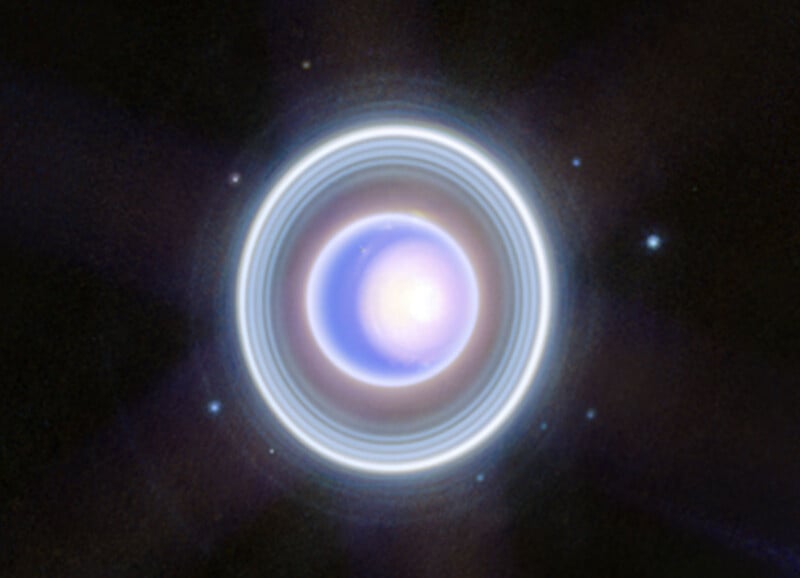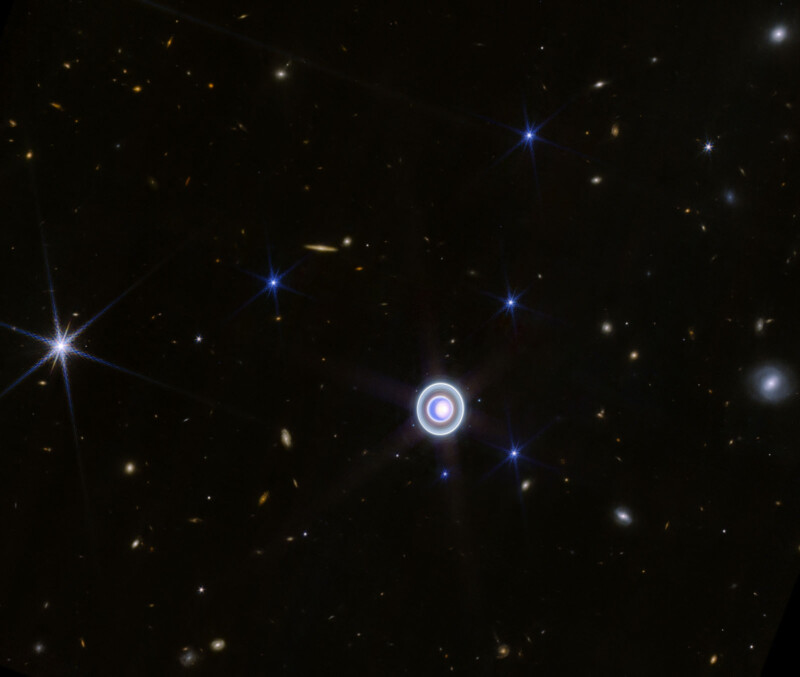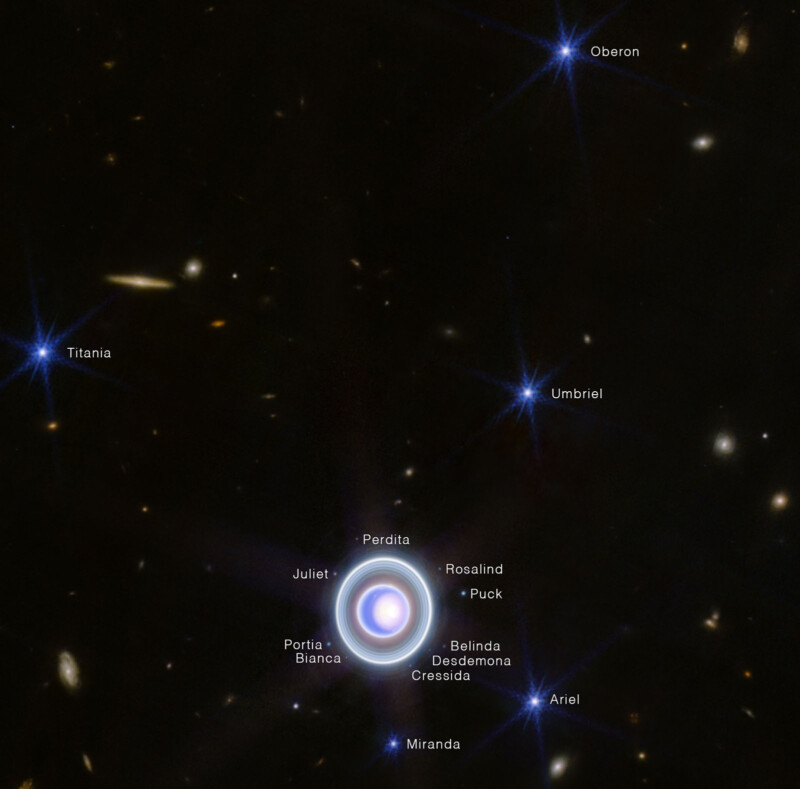
The James Webb Space Telescope has an early Christmas present for space enthusiasts: A stunning new photo of the ice giant Uranus.
As NASA explains in its news release, this is not the first time that the $10 billion space telescope has set its sights on Uranus. In April, the Webb team published a gorgeous portrait of Uranus that clearly showed the ice giant’s rings, which to that point, had only been seen two other times.
The faint dust rings are on display again and in even more spectacular and colorful detail, thanks to Webb’s “exquisite sensitivity.” Webb even captured Uranus’ elusive “zeta ring,” the most diffuse ring near the planet’s surface. Webb also imaged many of the planet’s 27 known moons, including small moons seen within the planet’s rings.
When humanity first set eyes on images of Uranus, including in visible wavelengths, thanks to Voyager 2 in the 1980s, the planet appeared as a simple blue sphere. As imaging technology has improved, the planet’s once-mythical rings have become more apparent, and its surface is not as serene as it once seemed.
“In infrared wavelengths, Webb is revealing a strange and dynamic ice world filled with exciting atmospheric features,” writes NASA. “One of the most striking of these is the planet’s seasonal north polar cloud cap. Compared to the Webb image from earlier this year, some details of the cap are easier to see in these newer images. These include the bright, white, inner cap and the dark lane in the bottom of the polar cap, toward the lower latitudes.”
There are also storms visible near the southern border of the polar cap. What drives these storms remains to be seen, although the working theory is that they result from seasonal and meteorological effects, much like some large-scale atmospheric storms on Earth.
“The polar cap appears to become more prominent when the planet’s pole begins to point toward the Sun, as it approaches solstice and receives more sunlight. Uranus reaches its next solstice in 2028, and astronomers are eager to watch any possible changes in the structure of these features. Webb will help disentangle the seasonal and meteorological effects that influence Uranus’ storms, which is critical to help astronomers understand the planet’s complex atmosphere,” NASA explains.
Alongside the new close-up portrait of Uranus, Webb also captured an incredible new “Uranus Wide-Field” image that shows the planet and its glorious rings against the background of distant galaxies. The wide-field shot also includes 14 of the planet’s 27 moons.


Uranus is critical to scientists studying exoplanets, as the relatively close gas giant can serve as a proxy for nearly 2,000 similarly sized exoplanets astronomers have discovered in the last couple of decades. Studying Uranus makes it possible to understand much more about very distant planets.
“This ‘exoplanet in our backyard’ can help astronomers understand how planets of this size work, what their meteorology is like, and how they formed. This can in turn help us understand our own solar system as a whole by placing it in a larger context,” NASA explains.
Image credits: NASA, ESA, CSA, STScI
